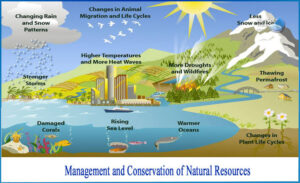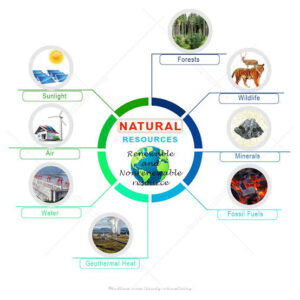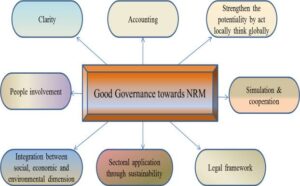Back to: Environmental Biology 100 Level
Welcome to class!
Hello champion learner! Today’s lesson is about Natural Resource Use & Conservation, a topic that affects how we live and survive on Earth. Everything we eat, drink, wear, and even the air we breathe comes from natural resources. By the end of this lesson, you will understand what natural resources are, how we use them, and why conserving them is crucial for our future.
Natural Resource Use & Conservation
Imagine if all the rivers dried up or the forests disappeared—life would become very difficult, right? This is why understanding and managing natural resources is important. Natural resources are the gifts of nature—like water, soil, trees, animals, and minerals—that humans depend on to live.

What are Natural Resources?
Natural resources are materials or substances found in nature that people use to meet their needs. Examples include water, forests, coal, oil, gold, fish, and soil.
Types of Natural Resources
Renewable Resources – These can be replaced naturally over time, like sunlight, forests, and fish.
Non-Renewable Resources – These are limited and cannot be replaced once used up, such as coal, oil, and natural gas.
Uses of Natural Resources
Water: For drinking, farming, cooking, and sanitation.
Forests: For timber, medicine, and as a home for wildlife.

Soil: For growing crops like yam, rice, and cassava.
Minerals: For construction, jewellery, and making tools.
Animals: For food, clothing, and other products.
Problems of Natural Resource Overuse
Deforestation leading to loss of wildlife habitats.
Overfishing, which reduces fish stocks in rivers and oceans.
Soil erosion caused by poor farming practices.
Pollution of air, water, and land.
Depletion of non-renewable resources like oil and coal.
What is Conservation?
Conservation means the careful use and protection of natural resources so that they are available for future generations. It is about using resources wisely and avoiding waste.
Methods of Conserving Natural Resources
Planting trees to replace those that are cut down.
Practising crop rotation and soil management to keep soil healthy.

Reducing, reusing, and recycling materials.
Using renewable energy sources like solar and wind power.
Enforcing laws and policies that protect wildlife and the environment.
Summary
- Natural resources are materials like water, soil, forests, and minerals that humans depend on.
- They are classified into renewable and non-renewable resources.
- Overuse of natural resources leads to problems like deforestation, pollution, and resource depletion.
- Conservation means using resources wisely to ensure they last for future generations.
- Planting trees, recycling, and using renewable energy are examples of conservation methods.
Evaluation
- Define natural resources and give three examples.
- Differentiate between renewable and non-renewable resources.
- List three problems caused by overusing natural resources.
- Mention three ways we can conserve natural resources.
You did excellently today! Remember, every small step you take—like not wasting water or planting a tree—makes the Earth healthier for everyone. Keep shining with Afrilearn, where your success is always our priority!
